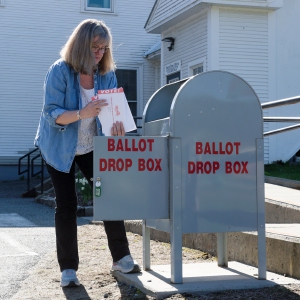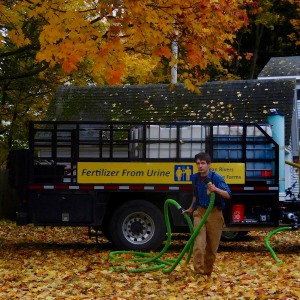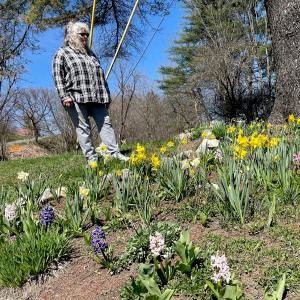Fall foliage is coming. But this summer’s rain makes peak color a bit less predictable.
| Published: 09-25-2023 8:01 AM |
It’s been one of the wettest summers on record, according to the National Oceanic and Atmospheric Administration. And Caitlin Hick Pries, a Dartmouth College professor who studies how ecosystems like forests adapt to climate change, said that excess rain makes it hard to predict how sprightly leaves will turn out this year.
In the past, leaf peepers may have been concerned that too little rain from droughts would dull the color of leaves.
“It’s a bit of a Goldilocks situation, where too much water can also be a bad thing,” said Hicks Pries.
That’s because with more wetness there’s a better chance for fungal pathogens to thrive, and that can stress leaves, causing trees to turn brown and drop them.
But Hick Pries said the recent stretch of drier weather as of late might spare that fate for some trees.
Scientists are seeing a delay in color. Hicks Pries pointed to one recent study that found peak foliage in Maine’s Acadia National Park in 2021 happened two weeks later than it did in 1950.
That’s in part due to climate change. Hick Pries said warmer days and nights in autumn fail to signal to trees it’s time to drop the leaves.
“Warmer autumns are leading to delayed leaf color specifically because in order for the plants to change color, they’re getting feedback from cues in their environment,” Hicks Pries said.
Article continues after...
Yesterday's Most Read Articles
 Dartmouth administration faces fierce criticism over protest arrests
Dartmouth administration faces fierce criticism over protest arrests
 Hanover house added to New Hampshire Register of Historic Places
Hanover house added to New Hampshire Register of Historic Places
 Sharon voters turn back proposal to renovate school
Sharon voters turn back proposal to renovate school
Cooler nights are one of those cues, and they have a role to play in the bright reds tourists want to see.
“That’s what we all want ultimately, right? We want those red colors,” she said.
The reds are produced by the plants. The pigments act as a sunscreen to protect the leaf while they’re taking all the good nutrients out of it before it drops.
Red pigments, also known as anthocyanins, also help trees draw nutrients back in from their leaves. Without them, trees can be less efficient at the task.
Areas where soil isn’t as nutrient rich, those red anthocyanins and the tree’s ability to reabsorb nutrients could be more salient.
“That’s important because leaves need nutrients to grow and it’s a waste if all of them just end up on the ground in leaf litter,” Hicks Pries said.
How long leaves will remain at their most vibrant, Hick Pries said, is up in the air, too. Wet weather may continue to have an impact.
These articles are being shared by partners in The Granite State News Collaborative, collaborativenh.org.

 Art Notes: Canaan Meetinghouse showcase brings musicians and listeners together
Art Notes: Canaan Meetinghouse showcase brings musicians and listeners together A Look Back: Upper Valley dining scene changes with the times
A Look Back: Upper Valley dining scene changes with the times The future of fertilizer? Pee, says this Brattleboro institute
The future of fertilizer? Pee, says this Brattleboro institute From dirt patch to a gateway garden, a Randolph volunteer cultivates community
From dirt patch to a gateway garden, a Randolph volunteer cultivates community 
